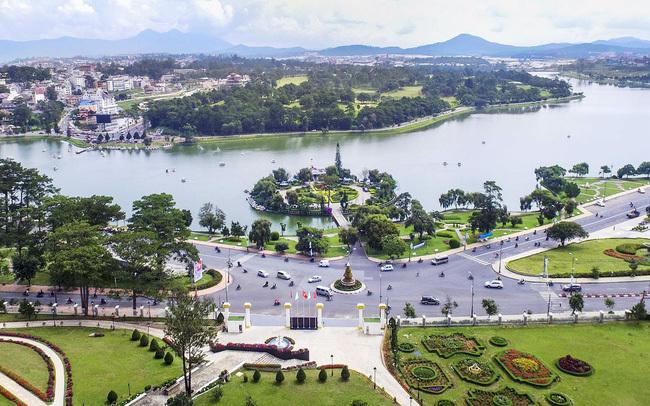Lam Dong, the pioneer
Lam Dong, a central province, with its climate and geographical advantages, began developing hi-tech agriculture many years ago.
In 1992, Da Lat Hasfarm, a flower farm, was set up in the province, bringing European technology. Just two years later, Lam Dong’s residents could build glasshouses and membrane houses, and utilize tissue culture technology.

Facilities that provide agricultural materials and services have been increasing and the number of greenhouse construction units is high. Lam Dong has 200 seed and 80 tissue culture centers, 80 percent of which belong to private businesses and individuals.
The time of cultivation from seeds is over. Now, seeds are carried from seed farms to tissue culture centers before reaching farmers, thus helping farmers shorten the cultivation process.
In the past, farmers needed four months to cultivate broccoli from seeds, but now, they can harvest the vegetable just after 40 days. Farmers are growing the vegetables meeting VietGap, Global Gap and ISO standards. Don Duong district was one of the first land area obtaining VietGap certificate.
High technology
|
Farmers are growing the vegetables meeting VietGap, Global Gap and ISO standards. Don Duong district was one of the first land area obtaining VietGap certificate. |
“What do you mean by hi-tech agriculture?” Truong Binh Nguyen from the Da Lat University, asked reporters.
He believes that technology must be a package solution which includes equipment, workshops, and cultivation techniques to obtain a certain level of yield.
Nguyen doesn’t think much about ‘low tech’ and ‘high tech’, saying that if farmers can take full advantage of natural advantages, they will still be able reap fruit, though they may not use the most advanced technologies.
“Suitable technology’ is what the Lam Dong Science & Technology Department is aiming at. Though mentioning ‘high technology’ in its reports, the department doesn’t fund cultivation models using the most advanced technologies and highest level of capital. Even though ‘4.0 industry revolution’ and ‘IoT’ are in fashion, the department still advises farmers to be cautious when utilizing technologies.
The department is joining forces with scientists, businesses and people to build cultivation models of varying automation levels which fit different cultivation conditions.
The models will be designed in a way to optimize the natural conditions of farmers’ investments, land area and capital. In other words, they help farmers make the lowest investments possible to improve crop productivity.
From Lien Khuong Airport to Da Lat City, one can see numerous white glasshouses on the two sides of the road.
There are 19 hi-tech agriculture production areas in Lam Dong. High technology is used on 20 percent of cultivation land in the province.
RELATED NEWS
Where is Vietnam’s hi-tech agriculture?
Investors still cannot make profits from hi-tech agriculture production
Mai Lan
 What does ‘hi-tech agriculture’ mean? Some experts believe that ‘hi-tech’ means ‘suitable’ for the farmers and their needs.
What does ‘hi-tech agriculture’ mean? Some experts believe that ‘hi-tech’ means ‘suitable’ for the farmers and their needs.